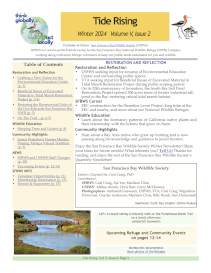Wilderness at 50: A Remarkable Concept
(via Refuge Friends NewsWire)
Conservationists around the world are celebrating the 50th anniversary of the Wilderness Act of 1964. The law represents a half-century-long struggle that began with people like John Muir and culminated with people like Olaus Murie and Howard Zahniser.
Zahniser wrote the first draft in 1956. The journey of the Wilderness Act covers nine years, 65 rewrites and 18 public hearings before being signed into law by President Lyndon B. Johnson on Sept. 3, 1964. The Wilderness Act established the National Wilderness Preservation System, which today includes 757 Congressionally-designated wilderness areas comprising about 109.5 million acres in 44 states and Puerto Rico.
“That a society would decide to set aside lands and waters and not actively manage them was a remarkable concept for a country founded on western socioeconomic traditions,” says National Wildlife Refuge System wilderness coordinator Nancy Roeper.
The U.S. Fish and Wildlife Service manages more than 20 million acres of wilderness in the Refuge System – about one-fifth of all the designated wilderness areas in the nation. There are 75 wilderness areas on 63 refuges in 25 states. The Service is one of four federal agencies with stewardship responsibilities; the others are the Bureau of Land Management, the U.S. Forest Service and the National Park Service.
“A wilderness, in contrast with those areas where man and his own works dominate the landscape, is hereby recognized as an area where the earth and its community of life are untrammeled by man, where man himself is a visitor who does not remain,” the Wilderness Act states. “An area of wilderness is further defined to mean in this Act an area of undeveloped Federal land retaining its primeval character and influence, without permanent improvements or human habitation, which is protected and managed so as to preserve its natural conditions …”
Managing designated wilderness requires a light touch and special care. “One of the toughest balancing acts of wilderness management is figuring out how to balance wilderness preservation with other refuge management activities. What action (or non-action) is best for the wilderness resource? This is a question that I, and refuge managers, struggled with at every single wilderness that I visited,” says Molly McCarter, a 26-year-old 2011-13 Refuge System wilderness fellow. “The idea of wilderness is an inherent part of American culture – wild spaces, existing in their own right, are what make the United States unique among countries. Wilderness preservation is cultural preservation.”
For more about Refuge System wilderness, including a map, fact sheet, blog and short video essay, go to http://www.fws.gov/refuges/whm/wilderness.html


